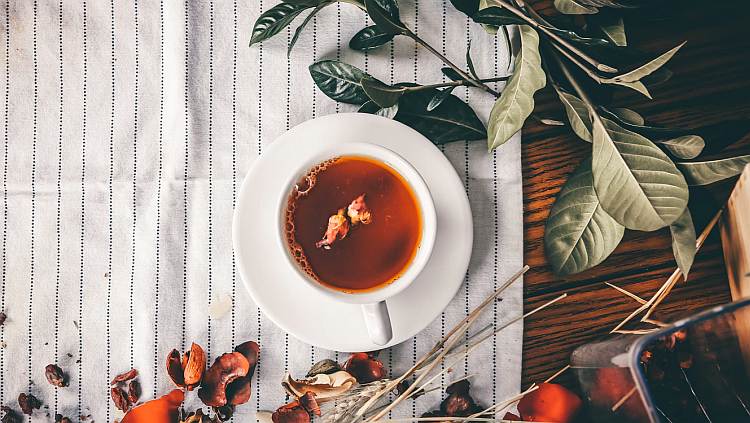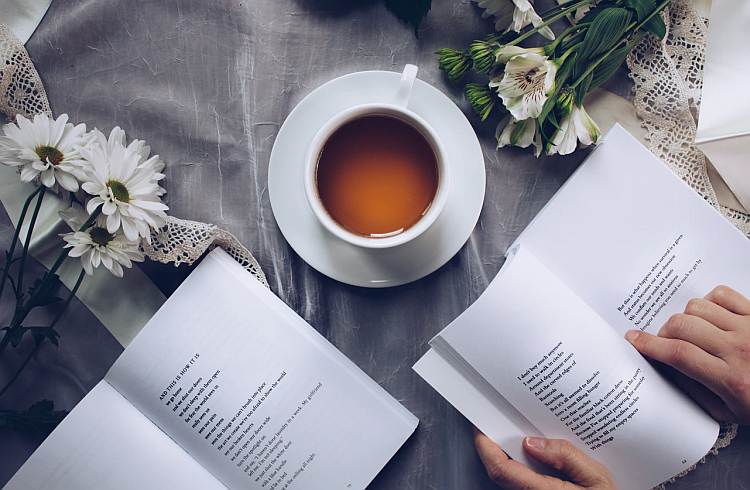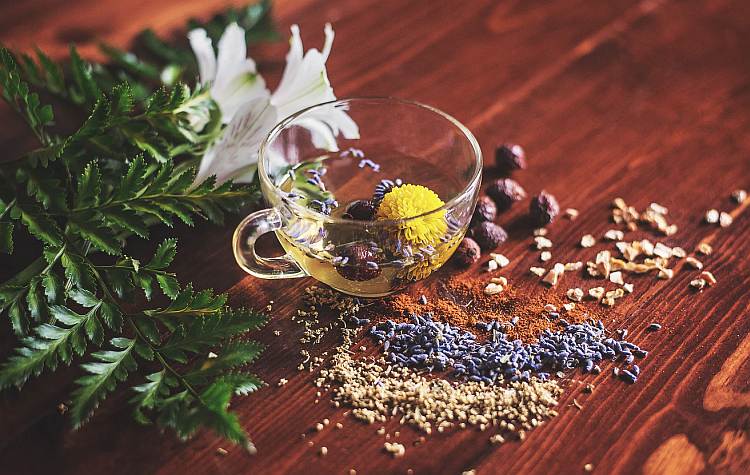Polish women still drink mainly black tea, yet we have many color teas on the market, which deserve attention not only for their original taste and aroma, but also for their valuable health-promoting properties.
Each type of tea has a unique character of the infusion. Let’s take a closer look at green tea, red tea, white tea and more. It is worth knowing that each tea is brewed differently and each has a slightly different effect. Join us on a journey through the land of dried tea.

Green cup
Green tea, is the biggest competitor to black tea. It comes in many forms and flavors. Japanese scientists believe that green tea contains substances that prolong youth. It has polyphenols and flavonoids in its composition, showing a wide spectrum of effects on the human body. These substances reduce the risk of arteriosclerosis, protecting against heart attack. Their action has been appreciated in anticancer prevention, because the epigallocatechin gallate present in the brew prevents the growth of cancer cells. Tannins present in the drink have an antiseptic effect – they effectively inhibit the multiplication of pathogenic bacteria and viruses.
Mouthfuls of green tea should not be poured with boiling water, and according to the Chinese brewing ritual, they should be washed first, that is, the first portion of the resulting infusion should be poured out (the so-called “sich ha”). According to the Chinese, only the drink is suitable for drinking after the second, 2-3 minute brewing. The same leaves can be poured with water at 70-8 °C even three times.
Secrets of Pu-erh
Following the publication of research conducted at Kunming University, obese Americans began referring to Pu-erh red tea as a “fat killer.” The weight-loss effect associated with consuming this type of tea was most pronounced in patients between the ages of 40 and 60. Pu-erh is a treasure trove of flavonoid compounds that seal and strengthen blood vessels. Their effect is described as anticoagulant. In addition, they lower blood pressure, bind metals and toxins. They also have an antiradical effect. The compounds in the drink activate enzymes for the secretion of digestive juices and stimulate intestinal peristalsis, so they help fight excess weight.
Pu-erh mouthfuls should be poured over boiling water and steeped for 7-8 minutes. Remember that white sugar added to the tea neutralizes most of its beneficial properties. The tea is best drunk after a meal, and to lose weight you should drink it fairly regularly.

White tea
White tea is otherwise known as Pai Mu Tan. It is prized in Asia, but still remains little known in Europe. White tea is made from the young buds of the tea plant, which sq only dried. In the cup the whole beautiful flower unfolds. It gives a very delicate and slightly sweet infusion. It is excellent in the fight against free radicals and counteracts the aging process of the body’s cells, so it helps to preserve youth. White tea is poured over cooled water and steeped for about 7 minutes.
Blue tea
Ulung tea – is found under various names: oolong, wu-lung, bohea, blue or emerald tea. It is a semi-fermented tea native to China and Taiwan. Ulung is characterized by a high content of tannins, catechins, with relatively little caffeine. Blue tea normalizes blood pressure. It can be consumed without baking by pregnant women and young children. Blue tea is suitable for multiple brewing. Mostly ulung is brewed 3 to 5 times.
Smoked tea
Lapsang Souchong, is a smoked tea, otherwise known as Russian or caravan tea. It owes its distinctive aroma to the traditional Chinese process of being smoked in clouds of pine or cedar smoke. It gives a very strong and dry brew, which is why it is considered a typically masculine tea. Its taste is sometimes compared to that of cigars or whiskey. It is often drunk with milk.

What is hidden in tea dried?
The health properties of tea are a product of many factors: the quality of the dried tea, how it is brewed, but most importantly, how often it is consumed. To some extent, the quality of the dried tea determines the quality of the final infusion. Teas are available in the form of leaves for brewing (grounds), express sachets, sometimes their addition is used for fruit blends. It is assumed that the larger, less fragmented the leaves, the higher quality the tea. Green tea leaves are usually rolled into pastorals (tiny balls). Dried good teas contain only leaves and buds, while inferior teas can contain twigs, sticks and other fragments that do not brew. Express teas, on the other hand, have their standardization requirements – the leaves must be crushed so that the infusion overcomes the barrier of the teabag and becomes essential.
The infusion is not served by the addition of aromas or flavor essences, as these are rarely natural, and usually synthetic or identical to natural flavors. On the market at the moment we have such a wide selection of teas that everyone can easily find something for themselves

